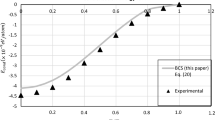Abstract
High-T c superconductors are EPR silent but on a little deoxygenation of the high-T c materials and their constituents, they yield rich but complex spectra. Spectra of (1) CuO, (2) BaCuO2, (3) CaCuO2, (4) Y2Cu2O5, (5) La2CuO4, (6) La2−x M x CuO4 (M=Sr, Ba), (7) Y based-123, (8) Bi based-2201, 2212, 2223, (9) Tl based-2223 and (10) Hg based-1212, 1223 have been studied. One thing common to all these materials is the CuO2 plane which gets fragmented on deoxygenation and the inherent antiferromagnetic coupling is partially destroyed which results in the appearance of the spectra.
The spectra recorded have been identified to be due to (1) Cu-monomer, (2) Cu-dimer, (3) Cu-tetramer, (4) Cu-octamer and (5) one signal at very low field which could not be identified because there was no structure in it and may be due to fragments higher than octamers. Very big fragments do not give any spectra because the original AF order probably remains intact in them. It is expected that when the fragments become magnetically isolated from the bulk, they produce EPR spectra. Most of the spectra have been analyzed and their spin-Hamiltonian parameters determined. The spectra of these species vary a little in terms of g-value and fine-structure splitting constant from sample to sample or even in the same sample and this may be attributed to some extra oxygen attachments retained with these species. Most frequently occurring species is the Cu-tetramer, (CuO)4. As (CuO)4 represents the unit cell of the all important two-dimensional CuO2 plane of the high-T c materials, its spectra have been argued to provide some clue to the mechanism of high-T c superconductivity. The tetramer (CuO)4 is a four one-half spin system and is essentially 16-fold degenerate by Heisenberg isotropic exchange, it is split into 6 components: one pentet, three triplets and two singlets. In superconductors the pentet appears to be the ground state and in the non-superconducting constituents the singlets seem to form the ground state as revealed by the temperature variation studies. In the case of La1.854Sr0.146CuO4 we have found the signature of quantum stripe formation. The high-T c superconductivity theories involving spin bag, antiferromagnetic spin fluctuations and magnons can be explained on the basis of Cu-tetramers.
Similar content being viewed by others
References
F Mehran, S E Barnes, T R Mcguire, W J Gallagher, R L Sandstrom, T R Dinger and D A Chance, Phys. Rev. B36, 740 (1987)
R N Schwartz et al, Bull. Am. Phys. Soc. 33, 807 (1988)
F Mehran and P W Anderson, Solid State Commun. 71, 29 (1990)
T G Castner and M S Seehra, Phys. Rev. B47, 578 (1993)
P Simon, J M Basset, S B Oseroff, Z Fisk, S W Cheong, A Wattiaux and S Schultz, Phys. Rev. B48, 4216 (1993)
A Punnoose, B P Maurya, Mohd Umar and R J Singh, Solid State Commun. 88, 195 (1993)
R J Singh, A Punnoose, J Mathew, B P Maurya, M Umar and M I Haque, Phys. Rev. B49, 1346 (1994)
R J Singh, M Ikram, A Punnoose, B P Maurya and Shakeel Khan, Phys. Lett. A208, 369 (1995)
A Punnoose and R J Singh, Int. J. Mod. Phys. B9, 1123 (1995)
S Khan, M Ikram, A Singh and R J Singh, Physica C281, 143 (1997)
S Khan, A Singh and R J Singh, Solid State Commun. 106, 621 (1998)
Shakeel Khan, Arti Singh and R J Singh, Physica C325, 162 (1999)
J Stankowski and M Mackowiak, Phys. Stat. Sol. 51, 449 (1972)
A Bianconi, M Missori, Solid State Commun. 91, 287 (1994)
J R Shriefer, X G Wen and S C Zhang, Phys. Rev. B39, 11663 (1989)
William Weltner Jr., Magnetic atoms and molecules (Dover Publications, Inc., New York, 1983)
P W Anderson, The theory of superconductivity in the high T c cuprate (Princeton University Press, Princeton, New Jersey 08540, USA, 1997)
Author information
Authors and Affiliations
Rights and permissions
About this article
Cite this article
Singh, R.J., Sharma, P.K. & Khan, S. EPR study of deoxygenated high-temperature superconductors. Pramana - J Phys 58, 843–848 (2002). https://doi.org/10.1007/s12043-002-0180-7
Issue Date:
DOI: https://doi.org/10.1007/s12043-002-0180-7




